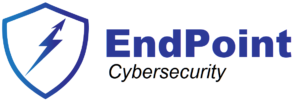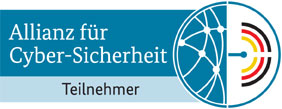NIS2: 2.Designate a responsible person or team
We wrote here https://www.sorinmustaca.com/how-to-nis2-eu-directive/ that the second step in implementing NIS2 requirements is to designate a responsible person or team.
Appointing an individual or a team responsible for overseeing the implementation of the NIS2 directive within your company is critical to ensure its success.
NIS2 implementation and compliance is a project, and as any project must have a dedicated team that is actively working on its implementation.
Due to the fact that the the NIS2 requirements are demanding a continuous activity, there must be a continuity of the project after its implementation. This means that there has to be a team appointed to this project that is responsible for continuously monitoring and adapting the activities required for NIS2 compliance. To effectively manage these challenges, companies should establish a new dedicated team or name an existing team to be responsible for cybersecurity and compliance.
In this article, we will explore the reasons behind the need for such a team and identify existing teams within a company that could take on these vital responsibilities.
Cyber threats are constantly evolving, becoming more sophisticated and persistent. From data breaches and ransomware attacks to regulatory changes, companies are exposed to a multitude of risks that can have significant consequences.
Here’s why a dedicated cybersecurity and compliance team is essential:
- Proactive Threat Mitigation: A dedicated team can stay ahead of emerging threats by continuously monitoring the threat landscape, analyzing vulnerabilities, and implementing proactive security measures. They can assess potential risks and ensure that the company is well-prepared to defend against cyberattacks.
- Regulatory Compliance: Compliance with industry-specific regulations (ISO 27001, TISAX, ISO 21434) and data protection laws (such as GDPR or HIPAA) is a legal requirement. A dedicated team can ensure that the company adheres to these regulations, avoiding costly fines and legal repercussions.
- Incident Response: In the unfortunate event of a cybersecurity breach, a well-prepared team can swiftly respond to contain the damage, investigate the incident, and minimize the impact on the business and its customers.
Good news: existing teams can take on cybersecurity and compliance roles!
Identifying the right team to assume the responsibility of cybersecurity and compliance is crucial.
Below are some existing teams within a company that could take on these roles. However, be aware that due to the complex nature of the task, most chances of success has an interdisciplinary team.
- IT Department: IT professionals are typically responsible for managing the company’s technology infrastructure. They can play a critical role in implementing security measures, monitoring networks, and ensuring that software and hardware are up to date with security patches.
Be aware, the IT teams may not have the specialized expertise needed for compliance and may benefit from additional support. With the right people on board, they can take over this critical task.
- Legal and Compliance Teams: Legal and compliance departments are already well-versed in navigating complex regulatory frameworks. They can take on the compliance aspect of cybersecurity, ensuring that the company aligns with industry-specific laws and regulations.
L&C teams may require additional cybersecurity expertise to address the technical aspects of protection.
- Dedicated Cybersecurity Team: For companies with significant digital assets and a higher level of exposure to cyber threats, establishing a dedicated cybersecurity team is advisable.
This team would focus exclusively on safeguarding the company’s digital assets, monitoring threats, conducting penetration testing, and developing comprehensive cybersecurity policies and strategies.
- Cross-Functional Cybersecurity Team: In some cases, it may be beneficial to establish a cross-functional committee that includes representatives from various departments, including IT, legal, compliance, and risk management.
This team can collaborate to address cybersecurity and compliance challenges effectively.
Important activities that must be performed for NIS2 compliance
As part of the NIS2 requirements, the team responsible make sure that these activities are performed.
However, due to the fact that so many areas are involved, it is quite clear that the entire company must be involved.
- Risk Assessment and Management:
- Identifying and assessing cybersecurity risks and vulnerabilities across the organization.
- Developing risk mitigation strategies and prioritizing security measures based on the level of risk.
- Compliance Monitoring:
- Ensuring the company complies with relevant industry-specific regulations, data protection laws, and compliance standards (e.g., GDPR, HIPAA, ISO 27001).
- Conducting regular compliance audits and assessments to identify and address non-compliance issues.
- Policy Development and Enforcement:
- Developing and maintaining comprehensive cybersecurity policies, procedures, and guidelines that align with regulatory requirements and industry best practices.
- Enforcing these policies throughout the organization and ensuring employees are aware of and adhere to them.
- Security Awareness Training:
- Providing cybersecurity awareness training to employees and stakeholders to enhance their understanding of security risks and best practices.
- Promoting a security-conscious culture within the organization.
- Incident Response Planning:
- Developing and maintaining an incident response plan that outlines the steps to take in the event of a security incident or data breach.
- Conducting tabletop exercises and simulations to test the effectiveness of the incident response plan.
- Security Auditing and Testing:
- Conducting regular security audits and assessments to identify vulnerabilities and weaknesses in the company’s systems and processes.
- Performing penetration testing and vulnerability scanning to proactively detect and address security flaws.
- Security Architecture and Design:
- Collaborating with IT teams to ensure that security is integrated into the design and architecture of systems, applications, and networks.
- Evaluating and selecting security technologies and solutions to protect the organization’s assets.
- Threat Intelligence and Monitoring:
- Monitoring the threat landscape to stay informed about emerging cybersecurity threats and trends.
- Collecting and analyzing threat intelligence to proactively identify potential risks to the organization.
- Security Incident Investigation:
- Investigating security incidents and breaches to determine their scope, impact, and root causes.
- Collecting and preserving digital evidence for potential legal and regulatory purposes.
- Vendor and Third-Party Risk Management:
- Assessing the cybersecurity practices of third-party vendors and partners who have access to the company’s data or systems.
- Implementing risk mitigation strategies for third-party relationships.
- Reporting and Communication:
- Reporting cybersecurity and compliance status and incidents to senior management, the board of directors, and relevant stakeholders.
- Maintaining open lines of communication with legal, IT, risk management, and other relevant departments.
- Continuous Improvement:
- Continuously evaluating and improving the organization’s cybersecurity posture based on lessons learned from security incidents and evolving threats.
- Staying updated on cybersecurity trends and best practices to adapt security measures accordingly.
- Business Continuity and Disaster Recovery Planning:
- Developing and maintaining business continuity and disaster recovery plans to ensure the organization can recover from disruptive events, including cybersecurity incidents.
- Regulatory Liaison:
- Interacting with regulatory authorities and auditors during compliance assessments and audits.
- Ensuring timely responses to regulatory inquiries and requests for information.
Cybersecurity and compliance are ongoing commitments that require dedicated attention and expertise. By establishing a specialized team or task force responsible for these crucial aspects, companies can better protect their data, reputation, and financial stability. Whether by empowering existing teams or creating new ones, the commitment to cybersecurity and compliance is an investment in the long-term success and resilience of the organization.
The post NIS2: 2.Designate a responsible person or team first appeared on Sorin Mustaca on Cybersecurity.




